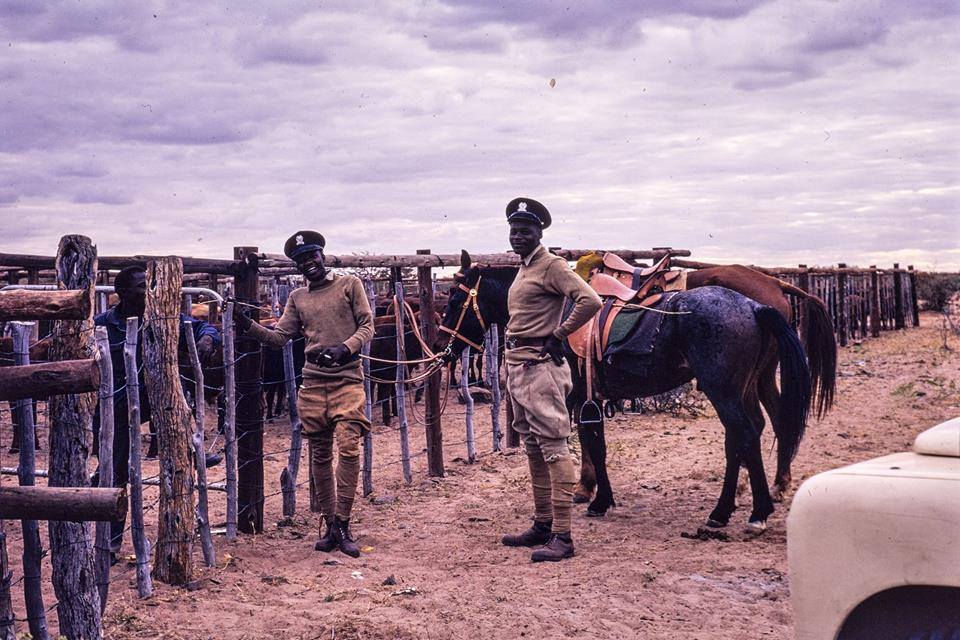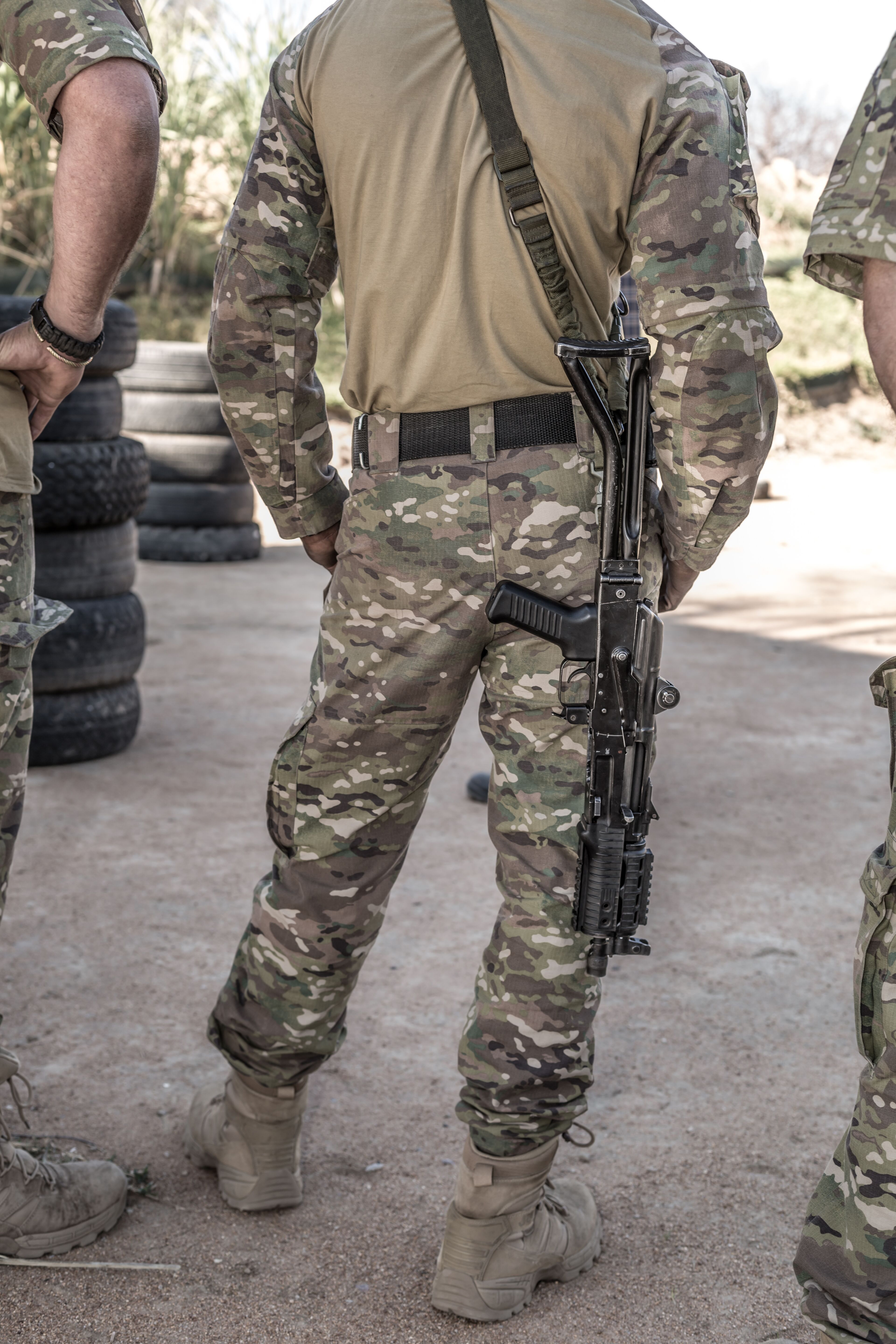|
Military Of Botswana
The Botswana Defence Force (BDF, tn, Sesole Sa Botswana) is the military of Botswana. The main component of the BDF is the Botswana Ground Force; there is also an air wing and a riverine patrol contingent attached to the ground forces, with 10 Panther airboats and 2 Boston Whaler Raider class. History At independence in 1966, Botswana made a decision to not establish a standing military and focus instead on development and poverty alleviation, and instead created a small military police force for internal security. However, cross border incursions by Rhodesian and South African security forces in the mid-1970s led the government to conclude that the country needed a military to protect its sovereignty. The BDF was established by an act of Parliament on 15 April 1977.https://oldsite.issafrica.org/uploads/OURSELVESKENOSI.PDF The BDF conducted patrols along the border with Rhodesia in the closing years of the Rhodesian Bush War. Following the end of the war and the independenc ... [...More Info...] [...Related Items...] OR: [Wikipedia] [Google] [Baidu] |
Botswana Ground Force
The Botswana Ground Forces is the army of the country of Botswana, and the land component of the Botswana Defence Force. History The Botswana Defence Force was raised in April 1977 by an Act of Parliament called the 'BDF Act NO 13 of 1977. At its formation, Lieutenant General Mompati Merafhe (retired and former Vice President of the Republic of Botswana (now deceased)) became its first Commander. The former List of heads of state of Botswana, President of the Republic of Botswana, Lieutenant General Ian Khama, Seretse Khama Ian Khama, then Brigadier, was the Deputy Commander. Unusually for an African military force, and chiefly attributable to its being founded after Botswana's independence, the Botswana Ground Force was not formed from colonial units formed by a colonising power, but rather were formed from the remains of the Botswana Mounted Police Unit, previously known as the Bechuanaland Mounted Police, a unit of the British South Africa Police. The contemporary roles of th ... [...More Info...] [...Related Items...] OR: [Wikipedia] [Google] [Baidu] |
Rhodesia
Rhodesia (, ), officially from 1970 the Republic of Rhodesia, was an unrecognised state in Southern Africa from 1965 to 1979, equivalent in territory to modern Zimbabwe. Rhodesia was the ''de facto'' successor state to the British colony of Southern Rhodesia, which had been self-governing since achieving responsible government in 1923. A landlocked nation, Rhodesia was bordered by South Africa to the south, Bechuanaland (later Botswana) to the southwest, Zambia (formerly Northern Rhodesia) to the northwest, and Mozambique ( a Portuguese province until 1975) to the east. From 1965 to 1979, Rhodesia was one of two independent states on the African continent governed by a white minority of European descent and culture, the other being South Africa. In the late 19th century, the territory north of the Transvaal was chartered to the British South Africa Company, led by Cecil Rhodes. Rhodes and his Pioneer Column marched north in 1890, acquiring a huge block of territory that ... [...More Info...] [...Related Items...] OR: [Wikipedia] [Google] [Baidu] |
United Nations Operation In Somalia II
United Nations Operation in Somalia II (UNOSOM II) was the second phase of the United Nations intervention in Somalia and took place from March 1993 until March 1995, following the outbreak of the Somali Civil War in 1991. UNOSOM II carried on from the United States-controlled (UN-sanctioned) Unified Task Force (UNITAF). It had been active for a transition period when United Nations Operation in Somalia I (UNOSOM I) mission proved to be ineffectual. All three of these interventions were intended to establish a secure enough environment for humanitarian operations to be carried out. Four months into its mandate, UNOSOM II would shift into a military campaign as it became embroiled in conflict, primarily against the Somali National Alliance led by Gen. Mohammed Farah Aidid. The infamous Battle of Mogadishu would take place during UNOSOM II, signifying the end of the hunt for Aidid and major operations in Somalia. The United Nations would pull out of Somalia one year later, mark ... [...More Info...] [...Related Items...] OR: [Wikipedia] [Google] [Baidu] |
Moremi Game Reserve
Moremi Game Reserve is a protected area in Botswana. It lies on the eastern side of the Okavango Delta and was named after Chief Moremi of the BaTawana tribe. Moremi was designated as a game reserve, rather than a national park, when it was created. This designation meant that the BaSarwa or Bushmen that lived there were allowed to stay in the reserve. Location and setting Moremi Game Reserve is just under in extent, covering much of the eastern side of the Okavango Delta and combining permanent water with drier areas, which create some startling and unexpected contrasts. Some prominent geographical features of the Reserve are Chiefs Island and the Moremi Tongue. In the Moremi Reserve one can experience excellent views of savannah game as well as bird-watching on the lagoons. There are also thickly wooded areas, which are home to the Cape wild dog (''Lycaon pictus pictus'') and leopard. To the northeast lies the Chobe National Park which borders the Moremi Game Reserve. Only ... [...More Info...] [...Related Items...] OR: [Wikipedia] [Google] [Baidu] |
Botswana Police Service
The Botswana Police Service is the police service of Botswana. History Colonial era The service has its origins in the ''Bechuanaland Mounted Police'', which was formed on 1 July 1884. The ''Bechuanaland Border Police'' were formed on 4 Aug 1885. In October 1889 a royal charter established the British South Africa Company's Police, which absorbed part of the BBP. During the 1890s the various police forces in the area went through a number of name changes until BSAP No.1 (Bechuanaland) Division ceased to exist, becoming the Bechuanaland Protectorate Police. This force recruited few Bechuanaland natives, instead it mostly recruited black constables in Basutoland (modern Lesotho), Rhodesia (modern Zimbabwe) and Zambia. Post-Independence In 1965 following the independence of Botswana the ''Botswana Police Force'', was formed and in 1971 the first female police constables were recruited. In 1977 in a reversal of earlier policy and in response to growing threats to Botswana's security, ... [...More Info...] [...Related Items...] OR: [Wikipedia] [Google] [Baidu] |
Peacekeeping
Peacekeeping comprises activities intended to create conditions that favour lasting peace. Research generally finds that peacekeeping reduces civilian and battlefield deaths, as well as reduces the risk of renewed warfare. Within the United Nations (UN) group of nation-state governments and organisations, there is a general understanding that at the international level, peacekeepers monitor and observe peace processes in post-conflict areas, and may assist ex-combatants in implementing peace agreement commitments that they have undertaken. Such assistance may come in many forms, including confidence-building measures, power-sharing arrangements, electoral support, strengthening the rule of law, and economic and social development. Accordingly, the UN peacekeepers (often referred to as Blue Berets or Blue Helmets because of their light blue berets or helmets) can include soldiers, police officers, and civilian personnel. The United Nations is not the only organisation to implem ... [...More Info...] [...Related Items...] OR: [Wikipedia] [Google] [Baidu] |
Anti-poaching
Anti-poaching is the organised act to counter the poaching of wildlife. However, it is generally used to describe an overall effort against the illegal wildlife trade. The act of anti-poaching is normally carried out by national parks on public land and by private security companies on privately owned land. Anti-poaching takes many forms and which depends mainly upon the habitat being protected. Typically, it is the act of actively patrolling land in an effort to prevent poachers from reaching the animals. Rangers The most basic level of anti-poaching are the on-site rangers. They are thought of as the first line of defence against the illegal wildlife trade. Rangers typically form squads, usually four men, filling complementary roles. These roles vary depending on the sophistication of the squads. In most situations, rangers are equipped with the bare necessities; a firearm, and a simple uniform. However, in recent times due to the popularity wildlife protection many organisation ... [...More Info...] [...Related Items...] OR: [Wikipedia] [Google] [Baidu] |
Gaborone
Gaborone ( , , ) is the capital and largest city of Botswana with a population of 246,325 based on the 2022 census, about 10% of the total population of Botswana. Its agglomeration is home to 421,907 inhabitants at the 2011 census. Gaborone is situated between Kgale Hill and Oodi Hill, near the confluence of the Notwane River and Segoditshane River in the south-eastern corner of Botswana, from the South African border. The city is served by the Sir Seretse Khama International Airport. It is an administrative district in its own right, but is the capital of the surrounding South-East District. Locals often refer to the city as ''GC or Motse-Mshate''. The city of Gaborone is named after Chief Gaborone of the Tlokwa tribe, who once controlled land nearby. Because it had no tribal affiliation and was close to fresh water, the city was planned to be the capital in the mid-1960s when the Bechuanaland Protectorate became an independent nation. The centre of the city is a lon ... [...More Info...] [...Related Items...] OR: [Wikipedia] [Google] [Baidu] |
Raid On Gaborone
The Raid on Gaborone (referred to as "Operation Plecksy" by the then South African Defence Force) took place on 14 June 1985 when South African Defence Force troops, under the order of General Constand Viljoen, crossed into Botswana violating International Law and attacked South African émigrés living in exile in Gaborone. The raid, the fifth South African attack on a neighbouring country since 1981, killed 12 people including women and children; only five of the victims were actual members of the African National Congress (ANC), at the time the main opposition group against the National Party white supremacist minority regime. Background In the 1980s, relations between Botswana and South Africa were strained. Anti-apartheid organisations such as the African National Congress used Botswana and other countries in Southern Africa as refuge. Despite Botswana's non-alignment policy, the South African Defence Force as the military force of the apartheid government conducted seve ... [...More Info...] [...Related Items...] OR: [Wikipedia] [Google] [Baidu] |
South African Defence Force
The South African Defence Force (SADF) (Afrikaans: ''Suid-Afrikaanse Weermag'') comprised the armed forces of South Africa from 1957 until 1994. Shortly before the state reconstituted itself as a republic in 1961, the former Union Defence Force was officially succeeded by the SADF, which was established by the Defence Act (No. 44) of 1957. The SADF, in turn, was superseded by the South African National Defence Force in 1994. Mission and structure The SADF was organised to perform a dual mission: to counter possible insurgency in all forms, and to maintain a conventional military arm which could defend the republic's borders, making retaliatory strikes as necessary. As the military expanded during the 1970s, the SADF general staff was organised into six sections—finance, intelligence, logistics, operations, personnel, and planning; uniquely, the South African Medical Service (SAMS) was made co-equal with the South African Army, the South African Navy and the South African ... [...More Info...] [...Related Items...] OR: [Wikipedia] [Google] [Baidu] |
Apartheid
Apartheid (, especially South African English: , ; , "aparthood") was a system of institutionalised racial segregation that existed in South Africa and South West Africa (now Namibia) from 1948 to the early 1990s. Apartheid was characterised by an authoritarian political culture based on ''baasskap'' (boss-hood or boss-ship), which ensured that South Africa was dominated politically, socially, and economically by the nation's minority white population. According to this system of social stratification, white citizens had the highest status, followed by Indians and Coloureds, then black Africans. The economic legacy and social effects of apartheid continue to the present day. Broadly speaking, apartheid was delineated into ''petty apartheid'', which entailed the segregation of public facilities and social events, and ''grand apartheid'', which dictated housing and employment opportunities by race. The first apartheid law was the Prohibition of Mixed Marriages ... [...More Info...] [...Related Items...] OR: [Wikipedia] [Google] [Baidu] |





